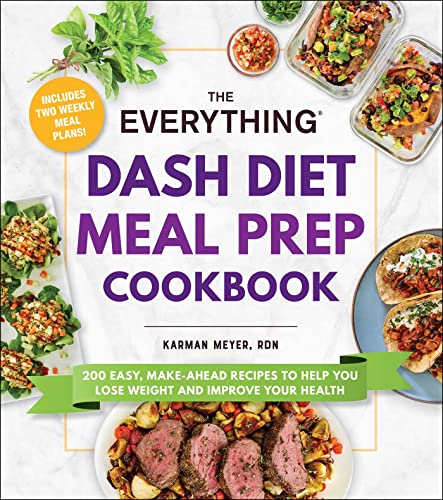Choosing an Effective and Sustainable Weight Loss Program
Weight loss is a topic that has attracted a plethora of advice from various sources. However, it is crucial to approach weight loss with a scientific and professional mindset, steering clear of gimmicks and fad diets. This article aims to provide a comprehensive guide to choosing a weight loss program that is right for you, based on scientific evidence and expert recommendations. By evaluating your personal needs, looking for a safe and effective program, and understanding the options available, you can make an informed decision that will support your long-term weight-loss goals.
Consultation with a Healthcare Provider:
Before embarking on any weight-loss program, it is essential to consult with a healthcare provider. This step is crucial to address any underlying medical issues and to evaluate the impact of medications on your weight. A healthcare provider can guide you in selecting a program that suits your specific needs and offer advice on safe exercise practices. Particularly if you have physical or medical challenges or experience pain during daily tasks, seeking medical guidance is of utmost importance.
Personal Considerations:
Recognize that there is no universal diet or weight-loss plan that fits everyone. It is vital to consider your personal preferences, lifestyle, and weight-loss goals when selecting a program. Reflect on previous diets you have tried and honestly assess what worked or did not work for you. Additionally, consider if you prefer to undertake a weight-loss program independently or with support from a group. Determine whether you prefer online support or in-person meetings. Lastly, take your budget into account, as some programs may require the purchase of supplements, meals, or attendance at support meetings. Be mindful of any health conditions, cultural or religious requirements, or ethnic food preferences that may influence your dietary choices.
Seeking a Safe and Effective Weight-Loss Program:
While it may be tempting to pursue promises of rapid weight loss, a slow and steady approach is generally more sustainable and effective in the long run. Aim for a weight loss of 0.5 to 2 pounds (0.2 to 0.9 kilograms) per week, as this is the recommended pace for healthy and lasting weight loss. In some cases, faster weight loss may be appropriate under medical supervision or during a quick-start phase of a healthy eating plan.
To ensure the safety and effectiveness of a weight-loss program, look for the following features:
a. Flexibility: Choose a program that incorporates a variety of foods from all major food groups, including vegetables, fruits, whole grains, low-fat dairy products, lean protein sources, and nuts and seeds. The plan should allow occasional treats but limit alcohol, sugary drinks, and high-sugar sweets, as these items lack essential nutrients.
b. Balance: Ensure that the program provides the right balance of nutrients and calories. Avoid diets that involve excessive consumption of certain foods, severe calorie restriction, or the elimination of entire food groups, as these practices can lead to nutritional deficiencies.
c. Likeability: Select a program that includes foods you enjoy and can sustain for a lifetime. If the plan is too restrictive, unappetizing, or monotonous, adherence may be challenging, making long-term weight loss unlikely.
d. Activity: Look for a program that emphasizes physical activity. Combining exercise with calorie reduction can enhance weight loss results and provide numerous health benefits, including the preservation of muscle mass during weight loss. Regular exercise is also crucial for weight maintenance.
Exploring different options:
When considering weight-loss programs, it is helpful to categorize them into major groups based on common characteristics. While there may be some overlap, the following categories are prevalent:
a. Balanced Diets: Examples include the Dietary Approaches to Stop Hypertension (DASH) diet, the Mayo Clinic diet, the Mediterranean diet, and WeightWatchers. These diets offer flexibility, nutritional balance, and a focus on long-term lifestyle changes.
b. High-Protein Diets: Examples include the Dukan diet and the Paleo diet. These diets emphasize lean meats and dairy but may lead to nutrient deficiencies when followed too strictly.
c. Low-Carb Diets: Examples include the Atkins diet and the South Beach diet. These diets restrict carbohydrates while promoting fat and protein consumption. However, they may be challenging to sustain over time.
d. Low-Fat Diets: Examples include the Ornish diet. These diets limit total fat intake and often exclude most animal products while providing balanced nutrition.
e. Meal Replacement Programs: Examples include Jenny Craig, HMR, Medifast, Nutrisystem, and SlimFast. These programs involve replacing one or two meals per day with specially formulated products. Cost and long-term sustainability should be considered.
f. Very Low-Calorie Diets: Examples include Optifast. These diets severely restrict calorie intake, typically to 800 or fewer calories per day. They are intended for short-term use under medical supervision.
Evaluating Weight-Loss Plans:
Before committing to a weight-loss plan, it is crucial to gather as much information as possible. Popular trends or recommendations from friends should not be the sole basis for decision-making. Ask the following questions to assess the suitability of a weight-loss plan:
a. What's involved? Determine if the plan provides adaptable guidance based on your unique circumstances. Evaluate if it requires the purchase of special meals or supplements, and consider the availability of online or in-person support. Ensure that the plan educates you on making sustainable, positive changes to your lifestyle to support long-term weight loss.
b. Scientific Backing: Investigate whether the weight-loss approach is supported by research and scientific evidence. When seeking guidance from weight-loss clinics, consider the expertise, training, certifications, and experience of the providers, dietitians, and staff. Assess if they will coordinate with your regular healthcare provider.
c. Health Risks: Examine if the weight-loss program poses any risks to your health. Consider the safety of the recommendations, especially if you have underlying health conditions or take medications that may interact negatively with the program.
d. Expected Outcomes: Determine how much weight loss you can realistically expect from the program. Be cautious of programs that promise rapid weight loss or the ability to target specific body areas. Assess if the program provides evidence of long-term weight maintenance through before-and-after photos or testimonials.
Conclusion:
Achieving successful and sustainable weight loss requires a lifelong commitment to healthy eating habits and regular physical activity. Selecting a weight-loss program that aligns with your goals, preferences, and lifestyle is crucial for long-term success. By taking a scientific and professional approach and evaluating the options available based on flexibility, balance, likeability, and activity, you can make an informed decision. Additionally, considering the guidance of healthcare providers, exploring different program categories, and assessing programs based on their features and expected outcomes will increase your chances of achieving and maintaining your desired weight loss goals.
Check out this awesome solution
Read about this amazing weight loss solution for people over 40











